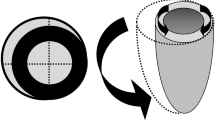Abstract
Objectives: We studied the use of esmolol in patients experiencing minor side effects of palpitations, anxiety, nervousness, and tremors associated with dobutamine stress echocardiography. Background: Dobutamine stress echocardiography is frequently used in the assessment of coronary artery disease. Esmolol administration may enhance patient comfort. Methods: Sixty consecutive patients who experienced minor side-effects during dobutamine stress echocardiography were given 0.3 mg/kg esmolol intravenously in the recovery period and compared retrospectively to sixty consecutive controls who underwent dobutamine stress echocardiography, who did not receive esmolol, during the same time period. Both groups were matched for age, ejection fraction, and peak dose of dobutamine. Heart rate and blood pressure were assessed during and after dobutamine administration.
Results: Both groups had similar baseline blood pressure (mmHg) (142 ± 19/72 ± 14 vs 139 ± 20/72 ± 14) and heart rate (beats per minute) (75 ± 14 vs 75 ± 17) (esmolol and control respectively, p=ns), but peak heart rate was higher in the esmolol group (126 ± 14 vs. 116 ± 14, p<0.01). In the group who received esmolol, symptomatic relief paralleled the statistically significant decrease in heart rate which occurred within 1 minute of esmolol administration (99.7 ± 15.3 vs 108.5 ± 13.1 p<0.0001); the heart rate in the esmolol group remained significantly lower than the control group for 5 minutes following esmolol administration (92.0 ± 10.3 vs 96.7 ± 11.8 p<0.05). As a percentage of peak heart rate the esmolol group remained significantly lower than the control for 7 minutes (74% vs 80% p<0.05). Esmolol induced a significant reversal of dobutamine-induced diastolic hypotension (diastolic blood pressure at peak 66 ± 17 vs 8 min recovery 70 ± 12, p<0.03) that was not seen in controls (diastolic blood pressure at peak 64 ± 18 vs 8 min recovery 65 ± 14, p=ns). Systolic blood pressure and heart rate remained elevated in both groups 8 min into recovery compared to baseline, suggesting persistent dobutamine effect beyond the expected 2 min pharmacologic half-life of dobutamine. No side-effects from esmolol were seen despite it being used in 9 patients with EF $lt; 35%. Conclusions: Esmolol is effective and well tolerated for the management of dobutamine-related minor side-effects. The mechanism of benefit, in addition to heart rate reduction, may involve a reversal of dobutamine- induced diastolic hypotension. Blood pressure and heart rate recovery are slower than expected from previously published pharmacokinetic data.
Similar content being viewed by others
References
Sawada SG, Segar DS, Ryan T, Armstrong WF, Feigenbaum H. Echocardiographic detection of coronary artery disease during dobutamine infusion. Circulation 1991; 83: 1605-14.
Cohen JL, Greene TO, Ottenweller J, Birenbaum SZ, Wilchfort SD, Kim CS. Dobutamine digital echocardiography for detecting coronary artery disease. Am J Cardiol 1991; 67: 1311-8.
Epstein M, Gin K, Sterns L, Pollick C. Dobutamine stress echocardiography: Initial experience of a Canadian centre. Can J Cardiol 1992; 8: 273-279.
Mertes H, Sawada SG, Ryan T, Segar DS, Kovacs R, Foltz J, Feigenbaum H. Symptoms, adverse effects and complications associated with dobutamine stress echocardiography; experience in 1118 patients. Circulation 1993; 88: 15-19.
Gray RJ, Bateman TM, Czer LS, Conklin C, Matloff JM. Comparison of esmolol and nitroprusside for acute post-cardiac surgical hypertension. Am J Cardiol 1987; 59: 887-91.
The Esmolol Multicenter Study Research Group. Intravenous esmolol for the treatment of supraventricular tachyarrhythmias: results of a multicenter, baseline-controlled safety and efficacy study in 160 patients. Am Heart J 1986; 112: 498-505.
Kirschenbaum JM, Kloner RF, McGowan N, Antman EA. Use of an Ultrashort — Acting Beta-Receptor (Esmolol) in Patients With Acute Myocardial Ischemia and Relative Contraindications to Beta-Blockade Therapy. J Am Coll Cardiol 1988; 12: 773-80.
Kates RE, Leier CV. Dobutamine pharmacokinetics in severe heart failure. Clin Pharmacol Ther 1978; 24: 537-41.
Reynolds RD, Gorczynski RJ, Quon CY. Pharmacology and pharmacokinetics of esmolol. J Clin Pharmacol 1986;26(suppl A): A3-14.
Author information
Authors and Affiliations
Rights and permissions
About this article
Cite this article
Abdullah, E.E., Pollick, C. Symptomatic and hemodynamic recovery following dobutamine stress echo: benefit of low-dose esmolol administration. Int J Cardiovasc Imaging 13, 53–57 (1997). https://doi.org/10.1023/A:1005710309714
Issue Date:
DOI: https://doi.org/10.1023/A:1005710309714




